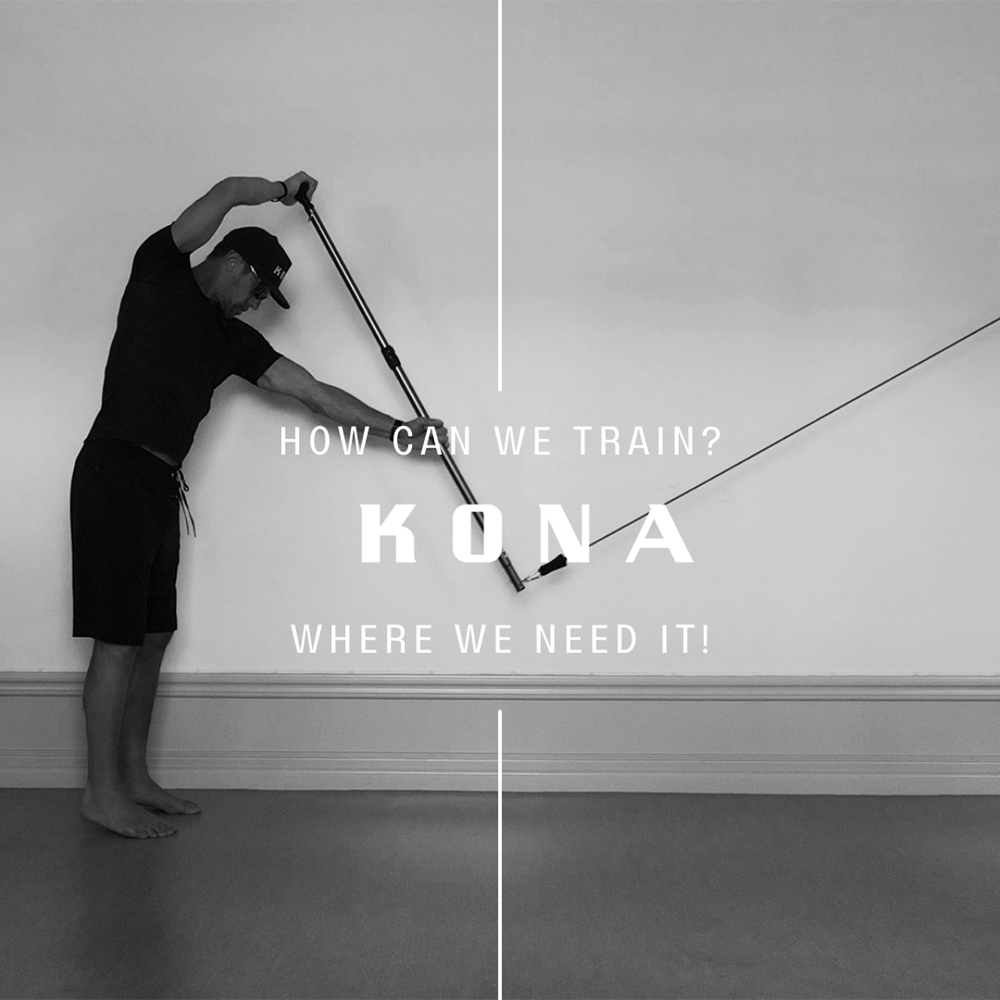
As you probably know, we have developed a new training tool primarily for SUP that we call "IndoorSUP". Despite the name, this also works just as well outdoors. 
The purpose of the equipment is to give us better opportunities to understand and learn how we can use the whole body to paddle SUP. "IndoorSUP" is in many ways a completely new way of training.
Thanks to the so-called unilateral resistance that this equipment is based on, we can now train all the specific muscles and movements that we need for ergonomic and efficient paddling wherever we are. This type of training will also develop us in all other activities.
Unilateral resistance in this case means that the body is loaded on one side, just like in SUP paddling. This means that the opposite side of the body must stabilize the body in order for us to both paddle straight and generate maximum power.
A big advantage is that this can be used by everyone, everywhere. The only training that matters is the one we do, so now there are no more barriers to training what we need for our SUP paddling. With "IndoorSUP" everyone can now have the same conditions for the best possible effect and experience on the water.
The evaluation of our overall analysis clearly shows that "IndoorSUP" can be a decisive factor in increasing the current performance of SUP. In what way, you probably wonder?
Well, over the years we have seen that a high physical capacity is not enough to create higher average speeds in SUP, it is only a foundation. Similar to a car, it's not the engine itself that makes the car go fast, it's also the drivetrain that makes the wheels turn, but that's not everything either.
If the parts that hold the wheels in place are not strong enough or properly fixed, much of the power will be lost anyway. It doesn't matter how strong an engine or powerful a drivetrain we have, the car won't work the way we want it to. In addition, if the wheels on one side roll worse than on the other, we can imagine how well the car will run.
Our body works in much the same way; our engine is our heart and lungs. The drivetrain is our large muscle groups. The parts that enable these to generate power are the small muscles that stabilize the bones and joints. It is through these that the power from our large muscle groups can be transferred to drive the board.
A crucial problem here is that if there is a difference in strength and mobility between the left and right side, it will still not be good. Something we all suffer from to a large extent as our bodies are asymmetrical. How can we fix this and is it even possible?
Both the advantage and the problem with SUP is that our movements on the board are far too general, ie that there are so many muscles and structures in the body that are activated at the same time. The advantage of this is that it provides extremely good training but then more for other activities. If we instead want to develop in SUP, SUP paddling itself, as strange as it sounds, is not very effective.
What "IndoorSUP" can help us with is to show both how good we are at activating the specific muscles we need when SUP paddling and whether we can perform these movements in a satisfactory way. It also gives a picture of how stable our joints are and whether there is a difference between the left and right side. Best of all, with "IndoorSUP" we can improve all this too! Something that is basically impossible to achieve on the water.
With "IndoorSUP" we can now easily increase our ability to paddle the SUP more ergonomically and efficiently, as this will drastically improve our power transfer. This training may be what most of us are missing as it also contributes to a better posture and thus movement precision, making us more functional in our everyday life.
We know it sounds unbelievable that just a paddle shaft and some rubber bands would be the key to all this, but it's the simplicity that makes it work. That together with a firm and stable surface. Basically the opposite of what we might think.
If you realize the purpose and want to test this unique and in many ways revolutionary training, can find it here - "IndoorSUP". Then you will also get access to basic instructional videos on how to start using it Indoor-sup.com. For specific questions, please contact me via support@kona-sports.com
Your development is our development!
/Magnus R Lindstedt
